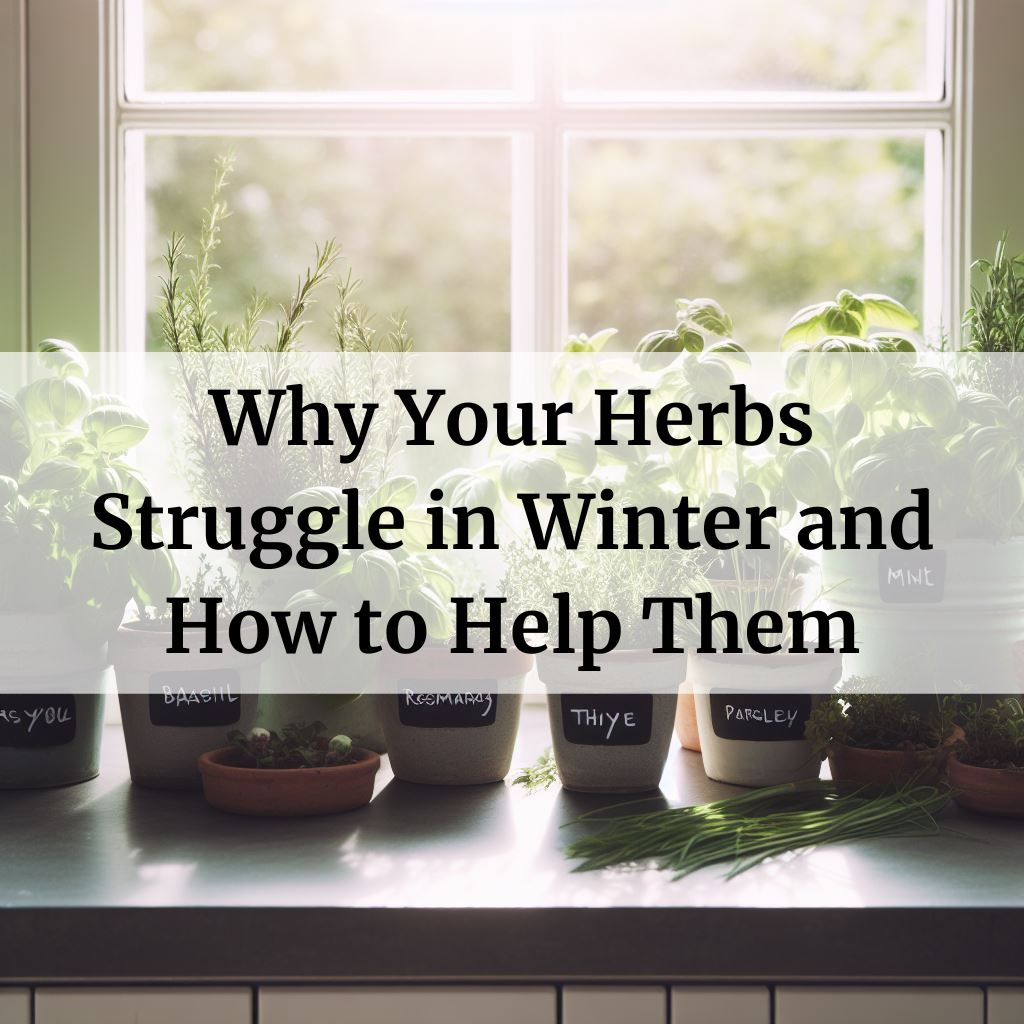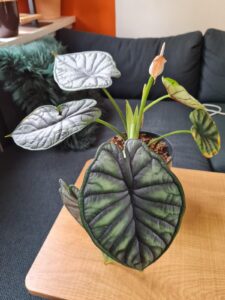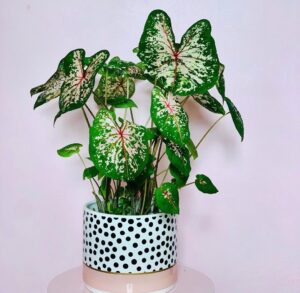
During winter, herbs face challenges such as frost damage, limited sunlight, and dry indoor air. To help them thrive, consider locating plants in a sunny, insulated spot, adding moisture through methods like pebble trays and misting, protecting them with mulch, and pruning and maintaining them. Whether or not to cover herbs in winter depends on factors like hardiness zone, type of herb, and frost expectations. With the right care, it’s possible to grow fresh herbs even in the coldest months.
In this article
The cold weather takes its toll
Many herbs are frost tender, meaning they can’t handle temperatures below freezing for long. When the thermometer drops, these delicate plants go into survival mode. Their growth slows way down or stops completely. Some varieties may even drop their leaves to conserve energy. Without protections like mulch, harsh winds and fluctuating temps in winter can damage herbs or even kill them.
Limited sunlight
Most herbs need at least six hours of direct sun per day to stay healthy. But in the short, overcast days of winter, that’s not always possible. Without sufficient light, herbs may become leggy, loose vigor, or fail to grow at all. Since longer nights also mean plants perform photosynthesis for fewer hours each day, they don’t produce as much of the energy they need.
Drier indoor air strips moisture
Heated indoor air in winter is very dry, which stresses out herb plants accustomed to a more humid climate. Their thin cell walls dry out rapidly. A constant lack of moisture can cause yellowing or browning leaves and even death. Humidity-loving herbs like mint, oregano and parsley struggle the most.
I’ve found a few tricks that make growing herbs through winter way more successful:
Locate plants in a sunny, insulated spot
Group your frost-tender herbs on a south-facing windowsill or under a grow light. The stable, warmer temperatures near your home’s exterior walls or insulation help buffer against freezing temps outside.
Add moisture
Placing pots on a pebble tray filled with water and misting foliage regularly keeps the air around your herbs from getting too dry. You can also try a cool-mist humidifier near your plant zone.
Protect with mulch
In zones 6 and warmer where winter is mild, hardy perennials like thyme, oregano and sage may survive outdoors with a thick blanket of straw or shredded bark mulch to insulate roots and prevent wet soils.
Find out what planting zone you are in and what herbs grow best in your State.
Prune and maintain
During very cold snaps, move containerized herbs indoors temporarily. Trim plants back periodically to encourage bushy new growth. Keep soil lightly moist and fertilize monthly to support herb health through the dormant season.
Covering herbs to protect
Whether or not to cover herbs in winter depends on a few factors:
- Hardiness Zone – Herbs growing in zones 6b or warmer may not need covered if temperatures don’t drop below 20°F. Those in colder zones will likely require winter protection.
- Type of Herb – Hardier perennials like rosemary, thyme and oregano can often withstand some frost without covering. More tender annuals like basil may need insulation.
- Frost Expectations – If a hard freeze is predicted, it’s best to cover all outdoor herbs to be safe. Mulch acts as insulation from fluctuating temps.
- Container vs. In-ground – Herbs in pots are more vulnerable to freezing than those in well-draining soil, so container varieties may warrant light frost coverage.
In general, I find that loosely mulching outdoor herbs with straw or shredded leaves provides enough winter protection in most cases. This blankets the herbs without matting down from heavy snow.
If a long, severe freeze is forecast, you can also try covering individual pots or planted beds with floating row cover fabrics like Reemay, which are lightweight enough to leave on plants for extended periods. They trap radiant heat without overheating herbs. Use stakes or weights to secure covers.
Surviving the winter
If you live in colder States like Minnesota, Wisconsin, Maine, Michigan’s Upper Peninsula, North Dakota, South Dakota or Montana that get an average snow fall of 40 inches of snow or more in winter, then you’ll need to take extra precautions:
Shelter from wind and sun: Herbs need shelter from strong, drying winds in winter. Group pots closely together or place them against a protective wall or fence. Also consider offering afternoon shade if in a hot microclimate.
Insulation from frost: Use mulches like shredded leaves, evergreen boughs or straw to insulate herb roots and lower stems from fluctuating temperatures and frost. Aim for a 2-4 inch layer.
Moderate moisture: Soils should be lightly moist but not soaked or allowed to fully dry out. Overly wet conditions can lead to rot over winter.
Adequate sunlight: Most potted herbs still need at least 4-6 hours of direct sunlight per day through winter. Consider supplementing with grow lights if indoor light levels are low.
Ventilation: Provide airflow under row covers, cloches or cold frames on sunny days to prevent built-up heat from cooking herbs. Lift covers briefly.
Protection from weather: Row covers, cloches or cold frames create protective mini greenhouses for frost-tender herbs. Cover if heavy frost is predicted or when temps dip below 25°F.
Pruning: Trim off any diseased or dead growth in fall to promote new winter foliage. Keep plants trimmed throughout winter for vigor.
In conclusion, a little winter TLC, you can absolutely grow fresh herbs to enjoy even in the coldest months. Just focus on insulating plants from harsh conditions and meeting their basic needs for light, warmth and moisture.
With some trial and error, I’m sure you’ll succeed!







